iOS and Android are the two most popular smartphone operating systems worldwide. So if you’re making mobile apps, you need to decide if you’re going to build for iOS, Android, or both.
Most people understand this concept at a basic level—iOS and Android are different. But exactly how are they different?
That’s why we created this guide.
Whether you’re a prospective developer, entrepreneur, or just a tech-savvy business user that wants to further your knowledge, you’ve come to the right place. We’ll cover everything you need to know about iOS and Android, including a clear explanation of each platform and the key differences between them.
What is iOS Mobile App Development?
iOS app development refers to mobile apps for Apple’s mobile operating system. iOS apps run on iPhones, iPads, and iPod Touch devices.
Apple has various operating systems for its devices. For example, applications built for Mac computers run on macOS. There is even an iOS variant, iPodOS, that’s specifically for iPads.
iOS development caters specifically to the unique device specifications and security requirements of Apple’s mobile operating system.
What is Android App Development?
Android app development is the process of making mobile applications that run on the Android operating system.
Android (developed by Google), has a wide range of devices that run using this OS. The list of brands includes Samsung, Google, Motorola, OnePlus, Sony, and thousands more.
In fact, there are more than 24,000 different types of devices that use the Android operating system, distributed by roughly 1,300 companies.
11 Key Differences Between iOS and Android Apps
Android and iOS are different in many ways. Below we’ll cover the top 11 key differences between the two mobile operating systems dominating the global market share.
1. Programming Languages
iOS and Android are powered by different backend tech stacks.
Swift and Objective-C are the two main programming languages used to code iOS apps. Swift is designed specifically for Apple products and is typically not used for anything beyond iOS development.
Android apps generally rely on Java and Kotlin programming languages. But Java also has use cases that work beyond Android devices. So if you’re a developer that’s familiar with Java, there’s an easier bridge to coding for Android.
Check out our guide on the best programming languages for mobile app development to learn more about all of these languages and more.
2. Design Strategy
When comparing iOS vs. Android, you’ll also notice some crucial differences between the way apps are designed.
Apple favors app content over design. So you’ll see more white space used to highlight app-specific features and clarity. iOS developers should refer to Apple’s Human Interface Guidelines for best practices.
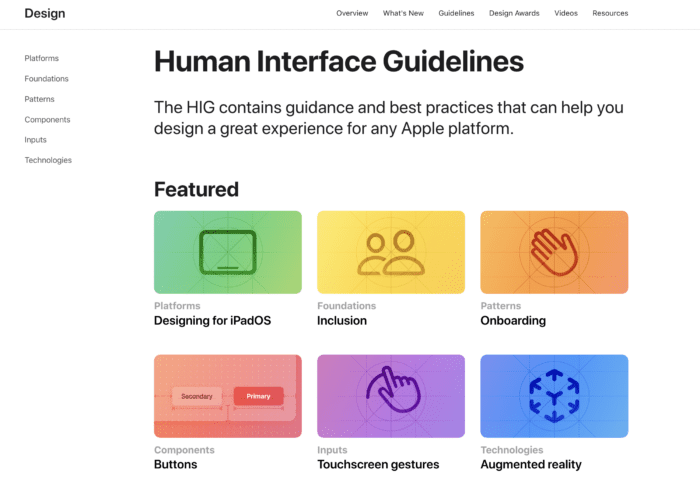
When designing for Android devices, you’ll have a bit more flexibility with color changes, motion, and light. The design guidelines aren’t quite as strict.
Android developers can refer to the Material Design for Android to learn more about the interaction design and motion between Android devices.
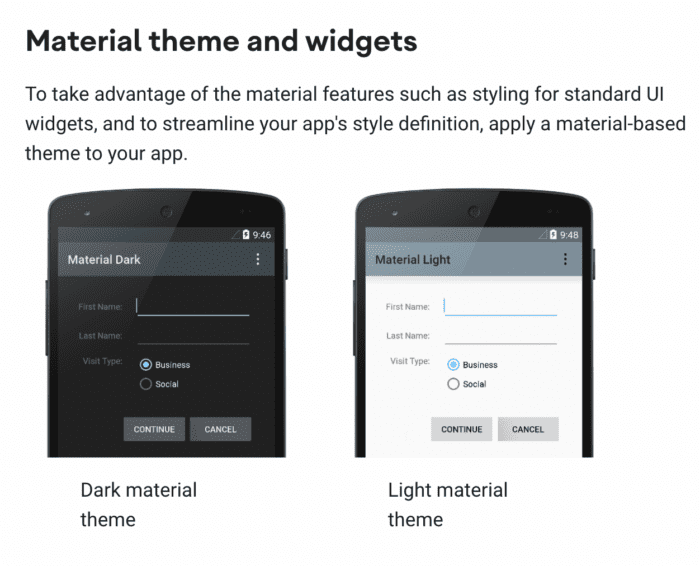
3. Integrated Development Environment (IDE)
Android and Apple both have different IDEs—integrated development environments.
Android developers can create an Android app using Android Studio, which was initially developed by Google back in 2013.
This is the official IDE for Android app development. It’s built on IntelliJ IDEA software from JetBrains and available to download on Linux, Windows, Chrome and macOS operating systems.
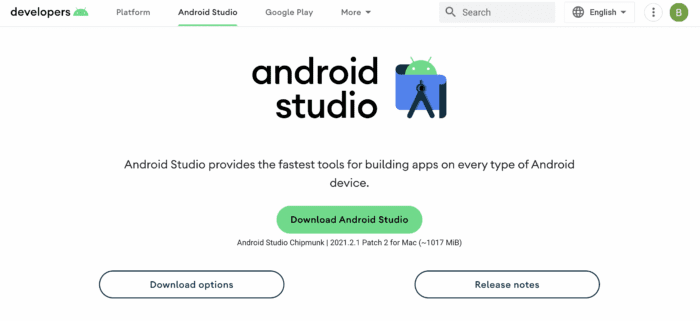
iOS developers rely on Xcode.
Xcode is Apple’s official IDE for all Apple software, including iOS. You can use Xcode to build apps for iOS, macOS, iPadOS, tvOS, and watchOS.
Unlike Android Studio, Xcode is only compatible with macOS. So you can’t download it on your Linux or Windows machine.
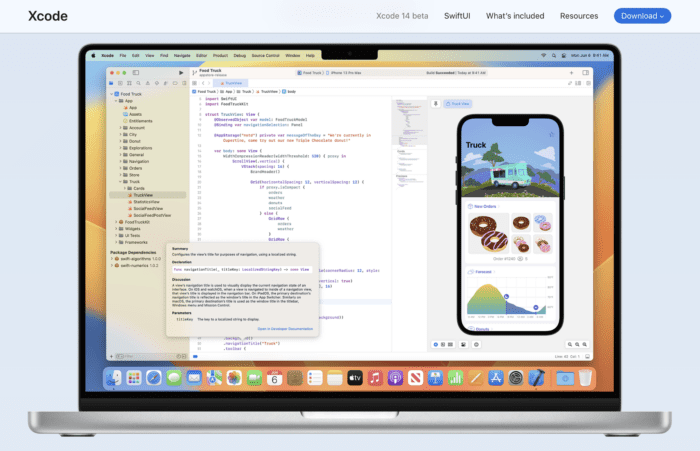
We have a complete Xcode tutorial that explains how it works and how to get started with iOS app development.
So which IDE is better—Android Studio or Xcode?
Each software has its pros and cons. Android Studio is a bit more versatile for developers who already have experience creating apps for other operating systems. But Xcode is easier to set up for beginners.
Both platforms have excellent debugging features, although Xcode might have the edge in this category. Android studio’s advanced code editor and layout design features might be more popular, although some users complain that it takes up too much memory on their devices.
4. Devices
When it comes to iOS devices, you’re basically just talking about different versions of the iPhone. You can put iPads and iPod Touch devices into this category as well.
But the list of Android devices is significantly larger.
As mentioned earlier, there are more than 24,000 different Android devices. Since the first iPhone launched back in 2007, there have been less than 40 different versions of this device for iOS.
5. App Distribution
Each platform has its own app store for distribution.
iOS apps can be downloaded from the Apple App Store, and Android Apps can be downloaded from the Google Play Store.
For more information, check out our step-by-step guide on publishing your app to the app store.
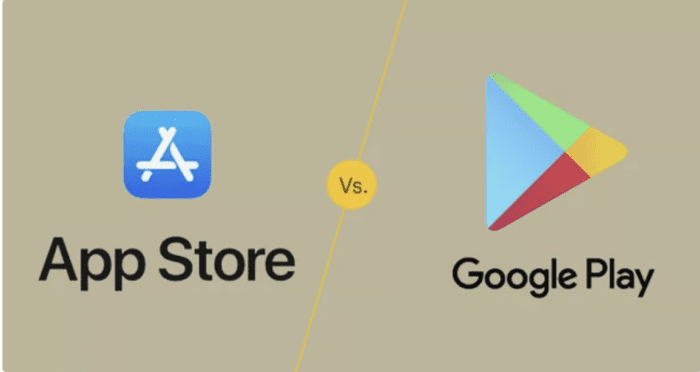
Android apps are better if you want to distribute your app to the widest possible audience. But iOS has some cool developer programs for app testing and distributing private apps.
Additional Reading: How to Distribute an iOS App Without Using App Stores
6. User Base
Android users and iOS users are different.
In the United States, there’s about an even split between the two operating systems. As of January 2022, iOS has a slight edge—controlling 51.2% of the US mobile OS market share.
But with a whopping 87% market share, Android dominates globally.
So if you’re on the fence about developing for iOS or Android, one of the first things you need to do is assess your target market. If you’re developing it for people in the US, you’ll likely need to build for both platforms. But if you’re developing for an international audience, excluding the US, you can stick with Android.
7. Monetization Strategy
Studies suggest that iPhone users earn more money than Android users. In fact, the median household income of an iPhone user is $85,000, compared to $61,000 for Android.
This is important information to consider when you’re looking for ways to monetize your app.
Since iPhone users may have more buying power, you can factor in things like in-app purchases with iOS development.
But Android developers may need to focus more on other ways to make money, such as in-app advertising.
8. App Store Rules and Submission Guidelines
Apple and Android have different processes for vetting apps.
Generally speaking, the Apple App Store is much stricter than the Google Play Store.
Poor quality apps and apps that aren’t very creative can still be published on Google Play. But Apple prioritizes quality and security.
For example, you can’t just take the mobile version of your website and turn it into an app for the Apple App Store. Apple requires the app to have distinct features and differences from your website.
Make sure you check out the App Store Review Guidelines before you submit your app to Apple. It’s a long document, but it clearly outlines all of the rules you need to follow.
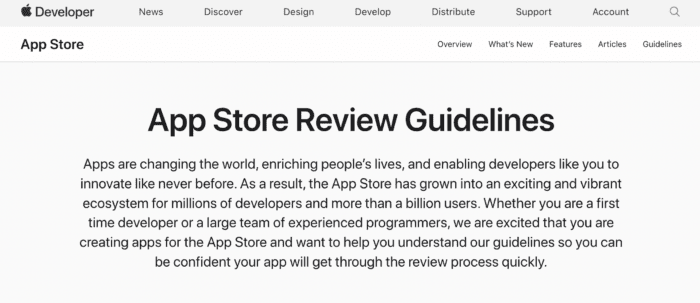
Aside from the rules, your app will appear differently in both stores. This means you may need to have a different app name, description, visuals, and other marketing promos for each store.
We have a guide on app store optimization that explains this in greater detail.
It’s also worth noting that the Apple App Store approval process typically takes a few days, while Google Play only takes a few hours.
9. App Security
The Apple App Store is generally safer than the Google Play Store. This is directly tied to Apple’s strict standards for submission and scrutiny of apps that don’t meet the standards.
There are significantly more apps with malware on the Play Store vs. the App Store.
That’s why it’s so important to have a secure app development method. This will not only protect your business, but also your users. If you create your app with BuildFire, you can rest easy knowing that everything is secure on the backend—regardless of the app store it’s on.

10. App Development Timeline
Generally speaking, Android development is more complex than iOS development. This has a direct correlation with the total development timeline.
Android developers need to account for a wider range of devices and screen sizes. Whereas Apple is much more limited.
Aside from having to adjust the graphics for more devices, Android developers also have to run tests and catch bugs on more devices. This is a time-consuming process.
While it obviously varies based on the type of app you’re building and the features you want, most Android apps take about 30% to 40% longer to launch than iOS apps.
Additional Reading: How to Launch an App Fast
11. Total Cost of Development
Longer timelines generally translate to higher costs.
That’s why it usually costs more money to create an Android app vs. iOS app.
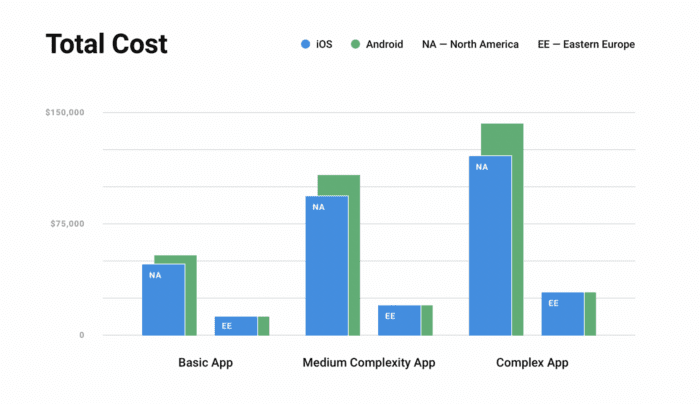
But again, there are lots of factors at play when you’re thinking about your app budget and total cost of development.
As you can see from the graph above, the average cost of a complex app using developers in Eastern Europe would be cheaper than creating a basic app using developers in North America.
The average cost of iOS developers in North America is about $150 compared to $168 for Android. Both of those numbers drop to about $35 per hour when outsourced overseas.
Using BuildFire for iOS and Android App Development
BuildFire is the ultimate solution for cross-platform apps. Rather than developing two separate apps for iOS and Android, you can use BuildFire to create both with a single build.
As a no-code app builder, BuildFire makes it possible for anyone to create an app without any technical skills or programming knowledge.
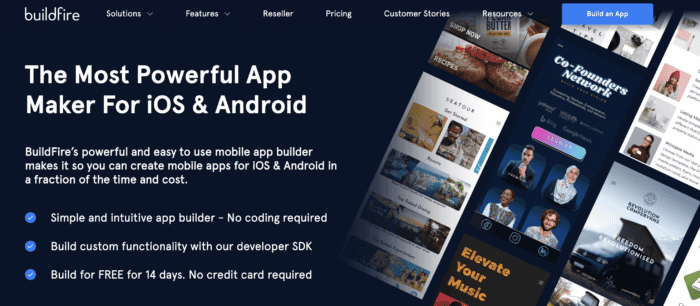
This helps you get your app to market as quickly as possible and for a fraction of the cost compared to traditional development.
Unlike other app builders on the market, BuildFire is developer-friendly. This means you can create custom functionality and scale limitlessly, so you’ll never outgrow the platform.
BuildFire also offers in-house development services. So if you want to outsource the project completely or just outsource a few custom features, we can handle whatever you need.
Final Thoughts on iOS Apps and Android Mobile Apps
Android and iOS development are very different.
But most of you need to have an app available on both platforms. Rather than learning how to write code in multiple languages and navigate the difficult waters of platform-specific IDEs, you can just use a no-code app maker like BuildFire to simplify your project.
Sign up for a 14-day free trial to get started today, or reach out to our team for more information.